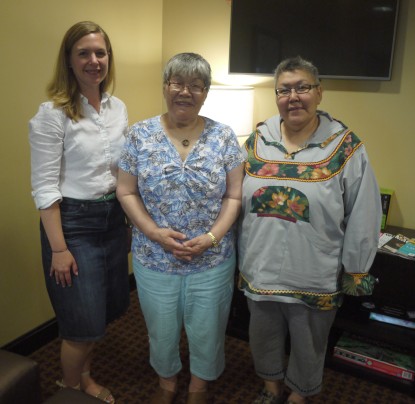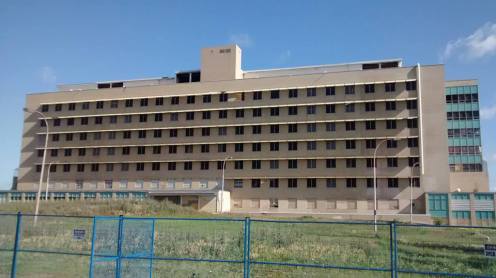I was walking around my new neighbourhood here in Houston, Texas, and all the pumpkins, witches and ghosts decorating homes got me thinking about the Charles Camsell Hospital and how far we’ve come.
In 2014, when I first started researching the Camsell in earnest, most news stories and internet hits talked about its status as a haunted building. There were “Top 10 Edmonton Haunted Sites” lists and shivery stories about breaking in after dark. But, as I’ve been learning, urban legends keep knowledge shallow. They keep us from looking into the complex nature of places and experiences, and the roles we play in them.
This video was released in May by the Inuvialuit History Timeline project.
I knew the Camsell’s story was deeper than that, and intimately connected to the work Canadians are doing around reconciliation. I wanted to dig into the history, but didn’t want to repeat past mistakes. So last year, when I set up this blog, I tried to do it with as much humility and compassion as I could. I’ve had missteps, to be sure, but I have learned from them. This blog has also connected me with the “Camsell Community,” as I’ve come to think of it – all those former patients, staff members, volunteers, and others – as well as other researchers, artists and spiritual leaders who are trying to make sense of this building’s history and legacy.
These individuals, and Edmonton as a whole, have made huge leaps toward understanding in the past two years. There are so many people passionate about holding these bits and pieces up to the light, finding answers, and moving toward reconciliation. There are Indigenous and non-Indigenous academics at the University of Alberta (and other institutions) contributing their skills, for example, to create an archival finding aid families can use to track down information about loved ones. Others are building knowledge about the Occupational Therapy Program and the arts and crafts patients created while at the hospital.
In April of this year, the Edmonton Heritage Council (EHC) hosted a gathering of Elders, former patients and staff, community organizations, and academics at a symposium. All the videos, reports and other information presented and discussed can be found on its website by clicking here.
The EHC also commissioned a short documentary, Camsell, that has been screened to sold-out audiences (free of charge) this fall, followed by Q&A sessions. It will soon be online and I’ll link to it when it’s up.
After the first screening, the Edmonton City as Museum Project podcast team asked people about their experiences at the Camsell, which led to an insightful 10-minute recording (below). It really shows, in quick fashion, how many voices are woven together in this work.
Finally, in book form, Maureen Lux released her work on the Indian Hospital system in Canada, Separate Beds, this spring (from University of Toronto Press). And I’ve been told Gary Geddes has a title coming out early next year on the topic, Unbundled Medicine, from Heritage House, based on his interviews with Elders who were at Indian Hospitals across Canada.
My own work continues as well, for Joseph Elulik’s family, who have been wonderful in their support and understanding on this journey. And for me and other Canadians of all backgrounds who want to know better – and do better. I just keep taking small, tentative steps forward, testing my approach, doing self-reflection, and trying to understand.


